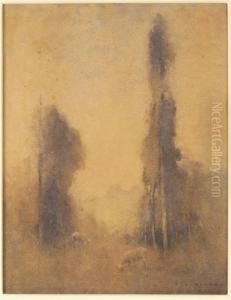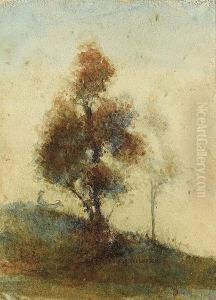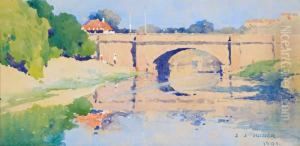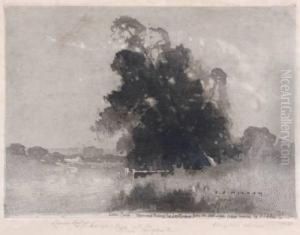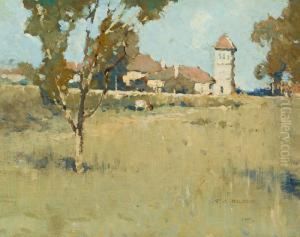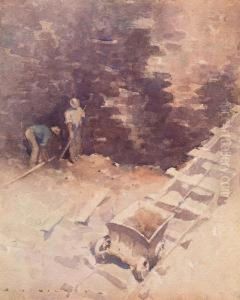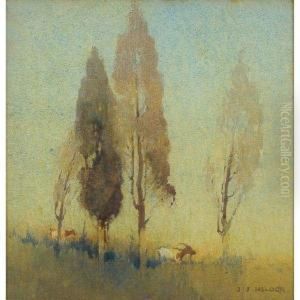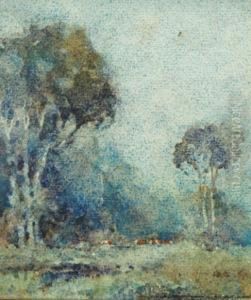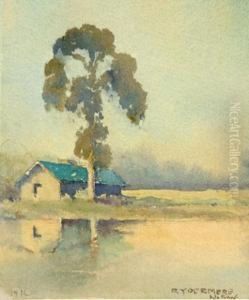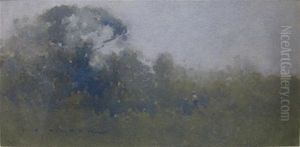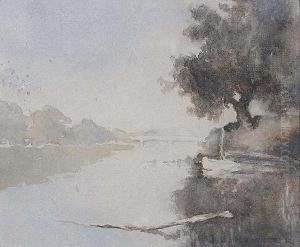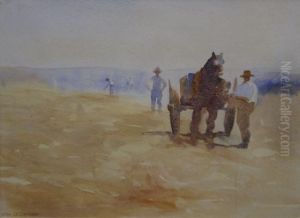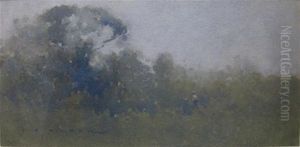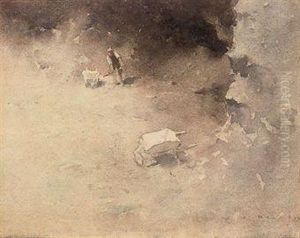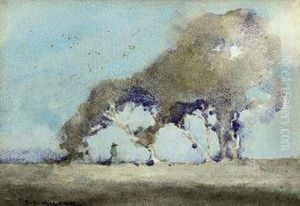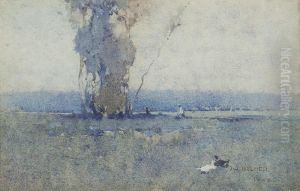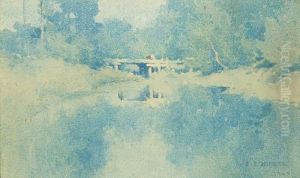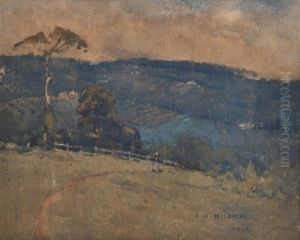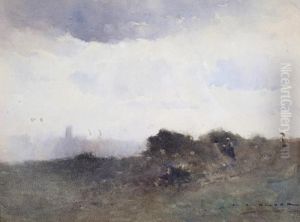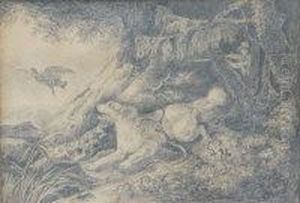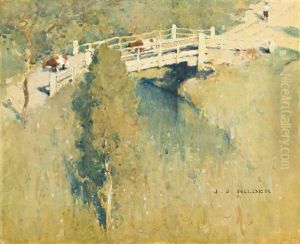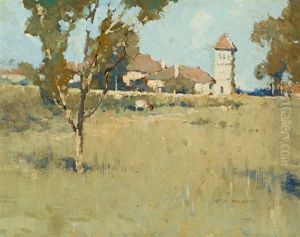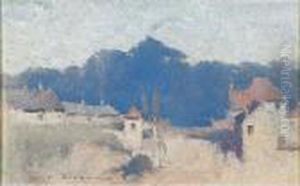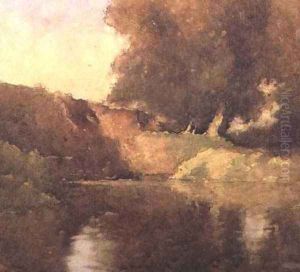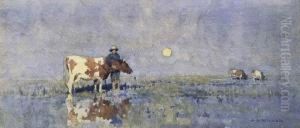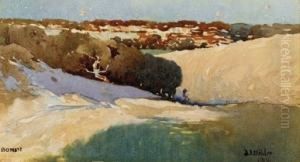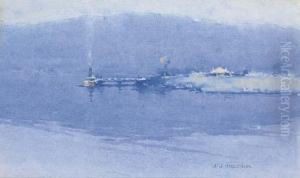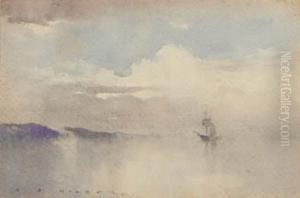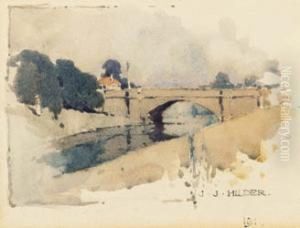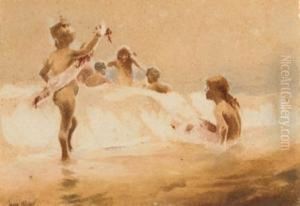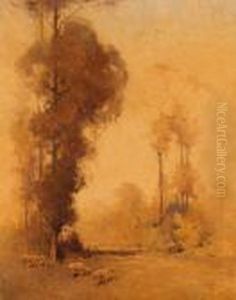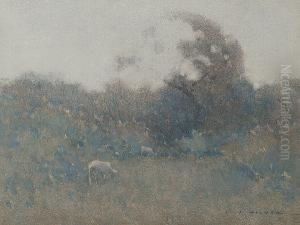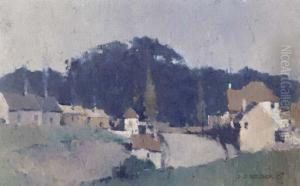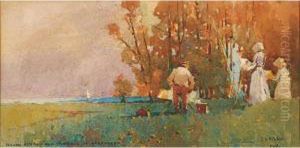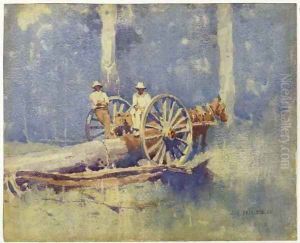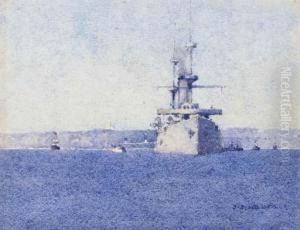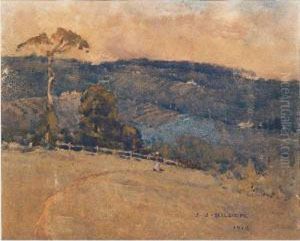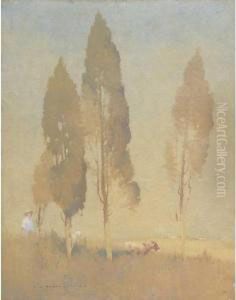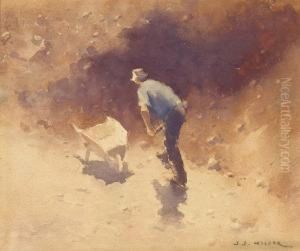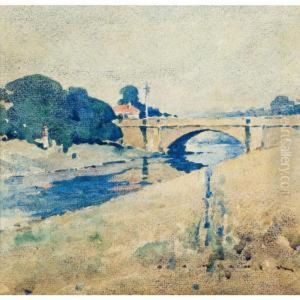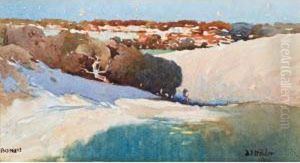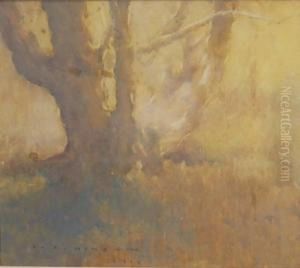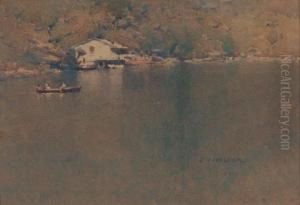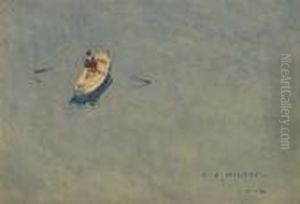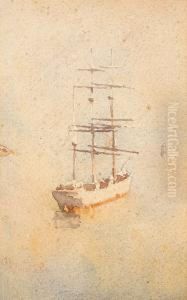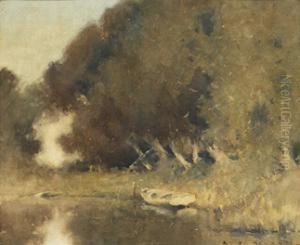Jesse Jewhurst Hilder Paintings
Jesse Jewhurst Hilder was an Australian watercolour artist known for his unique and innovative approach to the medium. Born on January 23, 1881, in Toowoomba, Queensland, Hilder showed an early interest in art and was largely self-taught. Despite his lack of formal training, Hilder developed a remarkable ability to capture the Australian landscape with a delicate and atmospheric quality that distinguished his work from that of his contemporaries.
Hilder's career as an artist was relatively brief, but during that time, he produced a significant body of work that contributed to the development of Australian art. His paintings often depict rural scenes, coastal views, and urban life with a sensitivity to light and mood that was highly praised. Hilder's technique involved using subdued colors and a minimalist approach that allowed him to achieve a sense of depth and realism.
In 1906, Hilder moved to Sydney, where he worked in a bank while continuing to paint in his spare time. His work began to gain recognition, and he became associated with the Sydney Art School, where he found a community of artists who shared his passion for painting the Australian landscape.
Tragically, Hilder's life and career were cut short when he succumbed to tuberculosis at the age of 35. He died on July 22, 1916, in the Blue Mountains of New South Wales. Despite his premature death, Hilder's influence on Australian art persisted. He was remembered for his gentle and lyrical interpretations of Australia and is considered one of the significant figures in the country's artistic heritage. Today, his artworks are held in several major collections, including the National Gallery of Australia and the Art Gallery of New South Wales, ensuring that his legacy continues to inspire and captivate art lovers and artists alike.
